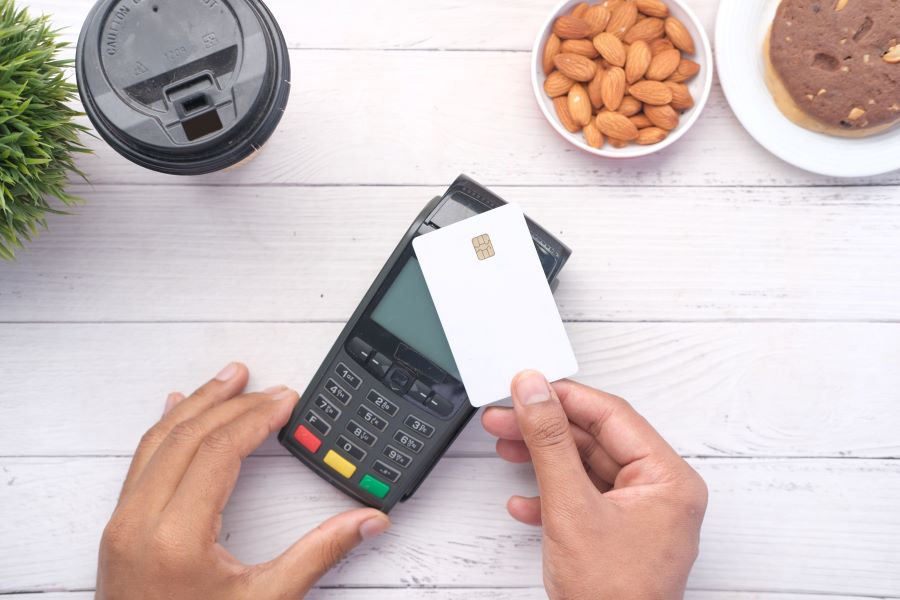OTP is an abbreviation for One-Time Password. To authenticate online banking and credit card transactions, it is a one-of-a-kind combination of four to six randomly generated numerical digits. By drastically minimizing the risks of identity theft, OTPs help secure one’s personal information and financial data from hackers. If you do not have a credit card yet, apply with the Airtel Axis Bank Credit Card to receive some amazing benefits and discounts! Let us read more about what is OTP in credit card transactions in this blog.
Also Read: How to get a credit card without a bank account?
How does OTP work in credit card transactions?
When you use a credit card to make a purchase, you are protected by many layers of protection. If you swipe your credit card in a retail shop to purchase an item or pay for meals, you must enter the pin that you set up at the beginning. There is a three-digit CVV number on the back of your card that must be known only by you and no one else for security reasons. When you use your credit card to book airline or hotel reservations, make an online purchase, or conduct any other online transaction, you must include your CVV number. However, your CVV number is not the sole level of protection provided by the bank. The One-Time Password (OTP) is a security feature.
Also Read: Here’s how you can check cash limit in a credit card
Pros of using OTP for Credit Card Transaction
Here are some of the pros of using OTP for credit card transactions-
- To complete the transaction, you do not need to memorise numerous passwords.
- Once on the secure screen, you will have three options for confirming your transaction.
- To finish your transaction, you can select any of the three alternatives provided.
Cons of using OTP for Credit Card Transaction
Here are some of the cons of using OTP for credit card transactions-
- OTPs are susceptible to human mistakes. If you misspell even one character of the OTP, the transaction is denied.
- OTPs are time-sensitive, which means that if you do not input the code within the specified time frame, the transaction is terminated.
- You may not get your OTPs due to a poor signal, a poor internet connection, or both. This might be a serious concern, especially if you reside in an area with a weak signal.
Also Read: What are the Various Types of Credit Card Charges?
How Credit Card Transaction Works?
The processing of credit cards varies based on where the transaction takes place and the type of card used. An online credit card transaction, for example, will begin differently from an in-person card transaction. Similarly, an in-person transaction will function differently if the credit card is kept in a digital wallet than if the consumer uses a real card. Despite these minor differences, the general credit card transaction procedure is largely identical across all types of purchases. Here’s a quick rundown of how the process works-
- Initiation– You need to give the credit card details. In-person purchases require them to swipe, insert, or tap their card. For online transactions, this entails manually inputting the card data or selecting a card from their saved payment options.
- Transmission of data– The transaction data are captured by the POS system or payment gateway and securely transmitted to the credit card processor.
- Request for authorization– The transaction data is forwarded by the credit card processor to the relevant card network, which subsequently directs the authorization request to the issuing bank.
- Acceptance or rejection– Your account is verified by the issuing bank, who checks for sufficient funds as well as any possible fraud or security concerns. Based on this assessment, the bank either accepts or refuses the transaction and transmits its decision to the card network, which forwards the information to the credit card processor.
- Reaction to authorization– The authorization response—either an approval or a refusal code—is sent by the credit card processor to the business’s POS system or payment gateway. If the transaction is accepted, the company may finalize the sale and give the consumer the products or services.
- Settlement– The business transmits a batch of all approved transactions to the credit card processor for settlement at the end of the day. The transaction data are also forwarded to the different card networks by the processor.
- Transfer of funds– Card networks collaborate with issuing banks to send funds for each transaction to the acquiring bank, which deposits the money in the merchant account. The money is then transferred by the acquiring bank into the regular business bank account, less any processing costs. Typically, this procedure takes 1-3 business days.
- Credit card billing– The transaction amount is added to your account balance and included in the monthly statement by the issuing bank. You are responsible for paying their credit card bill in accordance with the terms of their card agreement.
We hope now you’re well acquainted with what is the OTP in credit card transactions and the process behind it.



